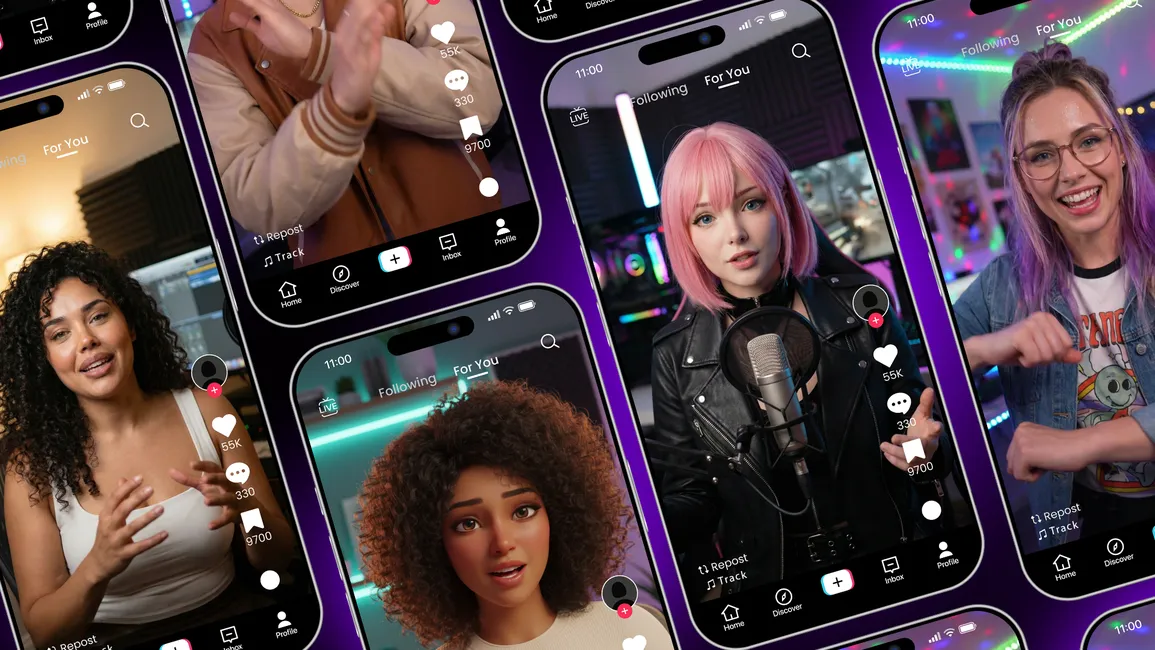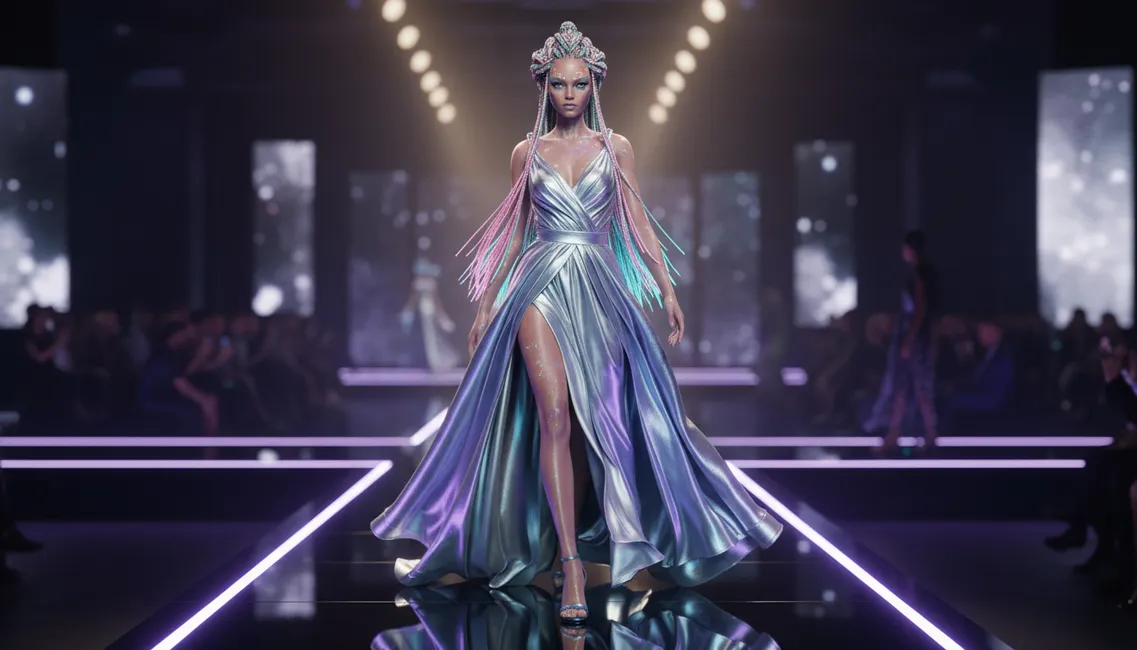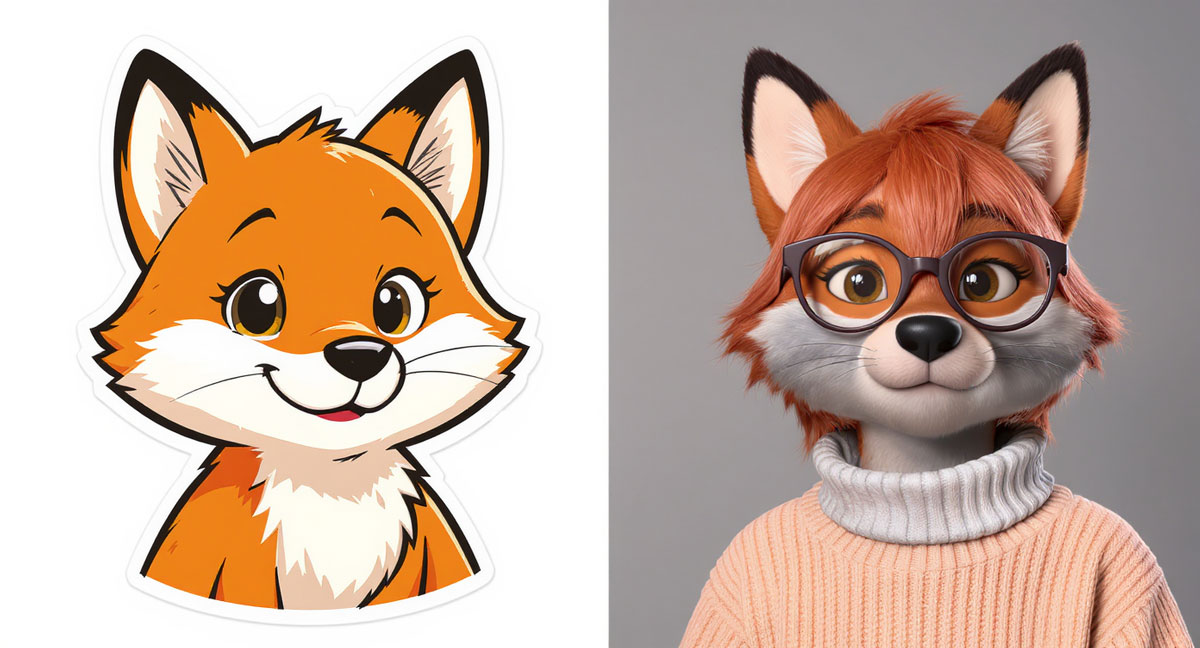
Once upon a time, brand mascots were the heart of advertising. Now, they’re meeting their future selves in the mirror—digitized, AI-optimized, and ready to go viral.
Virtual characters and brand mascots are no longer separate concepts—they’re evolving into a shared space where personality, presence, and performance are digitally designed. This isn’t just a shift in aesthetics—it’s a whole new framework for engagement.
For marketing leaders, the question isn’t “Which one is better?” but rather: How do we strategically combine them for maximum impact?
In this article, we’ll take a look at how virtual influencers and brand mascots are different, where they come together, and how hybrid characters are paving the way for the future of brand storytelling.
From social media strategies to IP ownership, you’ll find useful insights to help make your next brand character truly memorable.
Key Differences Between Virtual Influencers and Brand Mascots
At first glance, a virtual influencer and a brand mascot might seem like two versions of the same idea—a character created to represent your brand. But once you zoom in, the differences come into sharp focus.
These characters aren’t built the same. They don’t behave the same. And they definitely don’t show up in your campaigns the same way.
A brand mascot is a symbol, designed to be instantly recognizable and emotionally sticky. A virtual influencer is a performer designed to live, breathe, and post in real-time like a social media celebrity.
One’s built to be seen. The other? To be followed, shared, and talked to.
In the next sections, we’ll break down exactly how they differ—from the tech under the hood to the way they engage your audience. Knowing the difference isn’t just a branding detail—it’s the key to choosing the right character strategy for your next campaign.
What They’re Made For: Purpose and Role
Let’s start with the “why.”
Brand mascots are built to symbolize something—your brand’s values, personality, or promise. Think Tony the Tiger, the Michelin Man, or the GEICO Gecko. Their job is to be recognizable, consistent, and emotionally memorable. They’re usually part of a larger ad campaign, often saying the same slogan for decades. They’re not here to build a personal relationship with your audience. They’re here to represent your brand—loud, proud, and usually static.
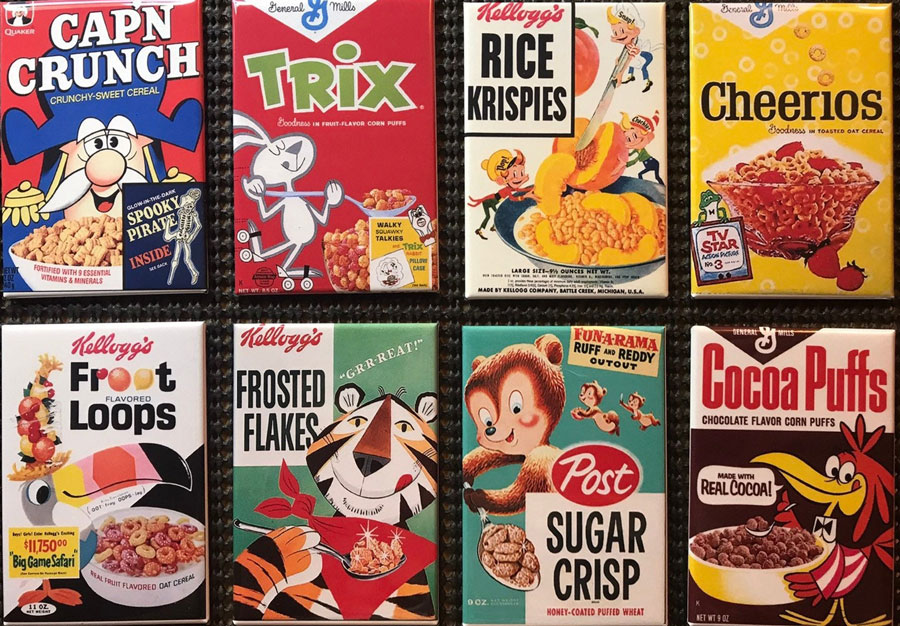
Virtual influencers, on the other hand, are built for social interaction. Their job isn’t just to show up in a commercial—it’s to live online, create content, start conversations, and feel like a “real” person. They blur the lines between spokesperson, celebrity, and character. Whether it’s posting on Instagram or starring in short-form videos, their goal is to influence behavior, drive engagement, and build emotional connection through ongoing content—just like human influencers.
In short: mascots represent your brand. Virtual influencers embody it.
Tech Behind the Character: Tools and Capabilities
Here’s where the real divide starts to show.
Brand mascots are typically brought to life through traditional means: 2D illustration, animation, costumed characters, or basic CGI. They’re made for commercials, billboards, product packaging, and occasionally social media. Most mascots don’t need to move in real time, respond to comments, or generate content on the fly—they’re scripted, staged, and static. The tech behind them? Think classic animation studios and ad agencies, not machine learning labs.
Virtual influencers are powered by a different engine altogether. We’re talking high-end CGI, motion capture, facial rigging, and in many cases—artificial intelligence. These characters don’t just pose—they talk, move, emote, and even interact. They’re designed for digital-native platforms and built with tech that lets them grow, evolve, and sometimes even speak with you in real time. Some are managed by teams. Others are semi-autonomous. Either way, they’re designed to act alive.
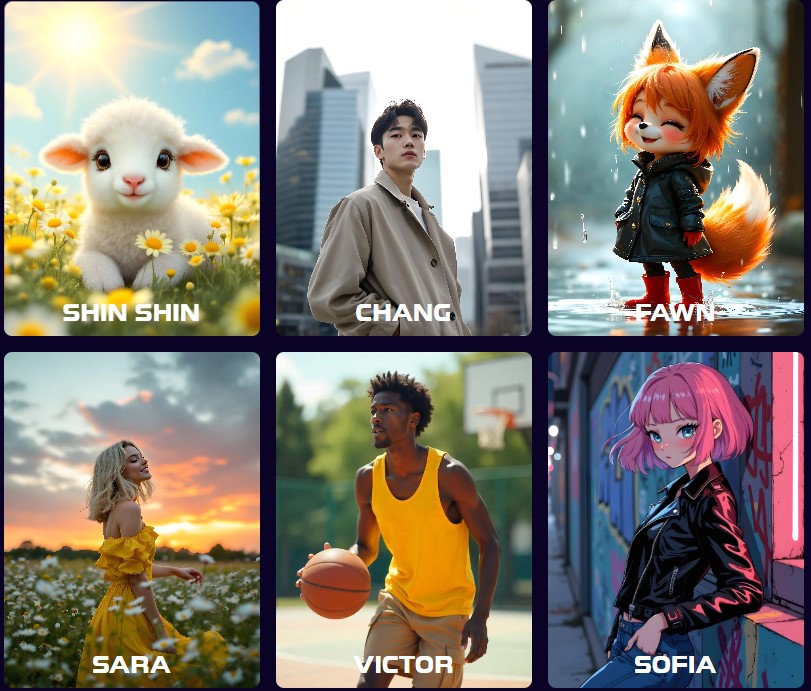
If mascots are digital logos with a face, virtual influencers are programmable personalities with a pulse.
How They Act: Personality and Behavior
Think of a brand mascot like an actor with one role. They smile the same way, say the same catchphrase, and rarely deviate from the script. That’s their strength—they’re consistent, dependable, and unmistakably branded. But that also means they’re limited. A mascot doesn’t grow, change, or show vulnerability. They’re more mascot than character—fun, familiar, and largely fixed.
Virtual influencers play by different rules.
These digital personas are built with depth. They have likes, dislikes, personal challenges, opinions (scripted or AI-generated), and evolving storylines. Their behavior is shaped to mimic real human influencers. One week they’re doing brand partnerships. The next, they’re sharing their “thoughts” on sustainability or posting a Q&A about mental health. They act like people—because that’s what makes them relatable.
So while mascots are exaggerated symbols, virtual influencers are nuanced performers. One delivers repetition. The other delivers range.
Where They Live: Platforms and Presence
Brand mascots were born for TV commercials, product packaging, billboards, and the occasional theme park appearance. Their natural habitat? Traditional media. While some have made the leap to digital (hello, Twitter-famous Mr. Peanut), most still operate in controlled environments. You won’t find them doing livestreams, jumping on TikTok trends, or responding to DMs at midnight.
Virtual influencers, however, are digital-first creatures. They live on Instagram, TikTok, YouTube, and wherever else culture is trending. Their feeds are curated. Their stories are ongoing. Their comments section? Alive. These characters are built to blend into the digital landscape—and they thrive in real-time, scrollable environments.
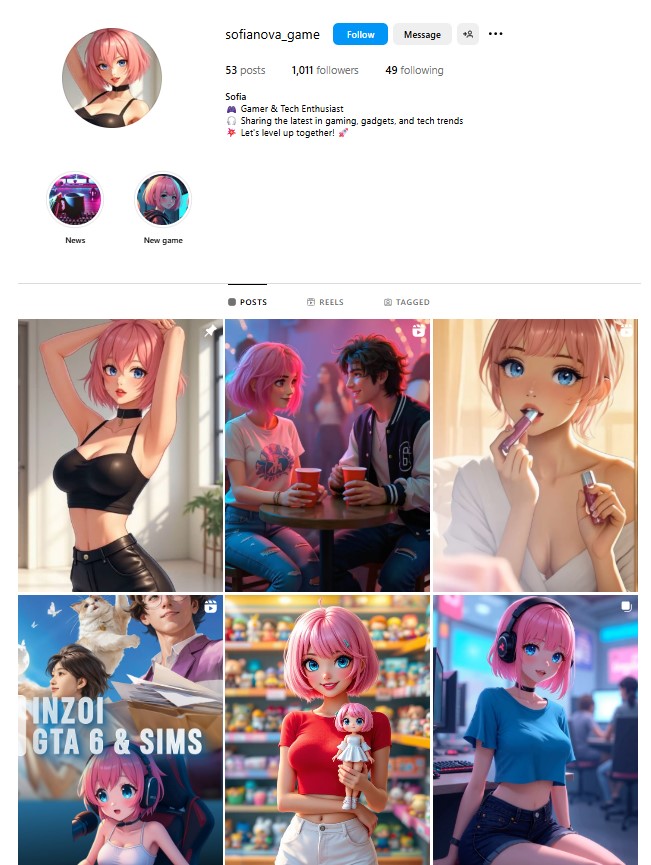
A mascot shows up when the brand needs them.
A virtual influencer never really leaves.
Audience Engagement: Passive vs. Interactive
Brand mascots talk at the audience. Virtual influencers talk with them.
That’s the biggest difference in engagement.
Mascots are mostly passive—they show up in ads, wave from the packaging, and maybe deliver a punchline or two. There’s rarely a sense of direct connection. They’re built to be recognizable, not responsive. And while they may be beloved, they’re still distant.
Virtual influencers flip that script. Their entire existence revolves around interaction. They respond to comments, post personalized content, collaborate with fans, and sometimes even host livestreams or Q&A sessions. They invite the audience into their world, blur the line between character and creator, and build relationships the same way a human influencer would—through consistent, emotional, two-way engagement.
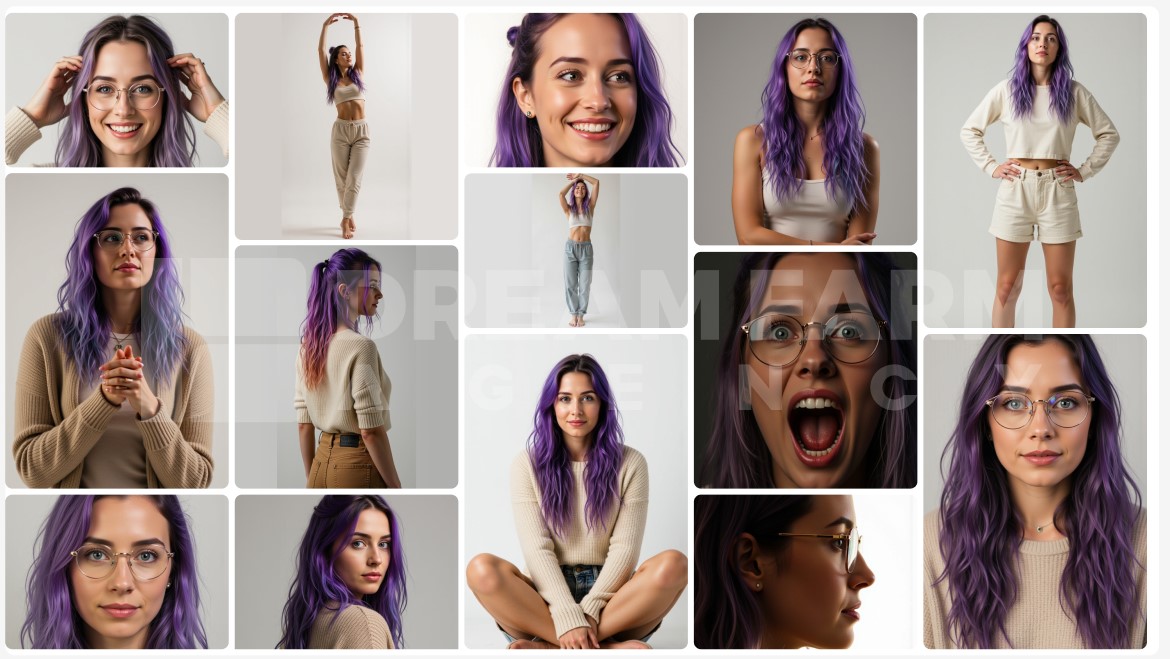
The result? Virtual influencers generate loyalty. Mascots generate recall.
Visual Identity: Human vs. Symbolic Design
A brand mascot doesn’t need to look human to work—often, it’s better if they don’t. From talking bears and dancing peanuts to animated lizards and smiling cows, mascots are intentionally cartoonish or symbolic. Their job is to be visually distinct, not realistic. Simplicity is their superpower. You recognize them instantly, and that’s the point.
Virtual influencers, though? They’re usually hyperreal. Their faces are symmetrical, their eyes are expressive, and their outfits are trend-aware. Some are stylized like anime or digital art, but many are designed to look just real enough to pass in a feed alongside human creators. That near-real quality is what fuels curiosity, shares, and conversation.
In short, mascots are icons.
Virtual influencers are characters—built to be scrolled, zoomed, and scrutinized.
Longevity and Evolution Over Time
Mascots are made to stay the same—on purpose.
They thrive on consistency. For decades, brands have relied on mascots like Tony the Tiger or the Michelin Man to deliver the same tone, the same look, and the same message across generations. Change them too much, and you risk alienating loyal fans. Most mascots don’t evolve—they just persist.
Virtual influencers, on the other hand, are built to grow. They update their looks, change their tone, join new conversations, and even develop new skills or backstories. They can “age,” pivot, experiment, and evolve—just like real people. And that’s by design. Their ability to shift with culture is what makes them effective long-term.
So while mascots are a snapshot, virtual influencers are a storyline.
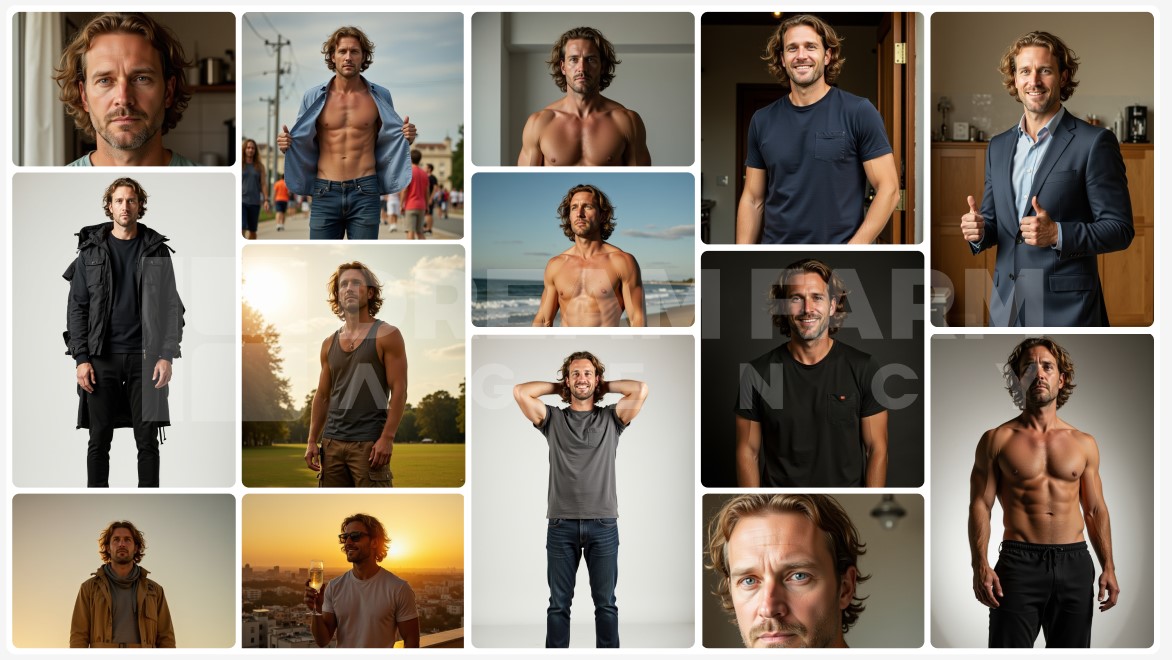
So, are virtual influencers just upgraded mascots? Not quite.
They may both be brand-built characters, but their DNA is different—from how they behave to where they live, how they engage, and what they’re designed to do. Mascots are timeless, consistent, and symbolic. Virtual influencers are adaptive, interactive, and alive with narrative potential.
One isn’t better than the other. They’re just built for different jobs.
Understanding the gap between them isn’t just academic—it’s strategic. Because whether you’re building loyalty or sparking conversation, the right character—used the right way—can turn your brand from memorable… to magnetic.
Brand Mascot to Virtual Influencer
Your brand mascot isn’t outdated—it’s unfinished.
That tiger, robot, or talking peanut you’ve used for years? It doesn’t need to retire. It needs to evolve. With today’s technology, you can take a static character and turn it into a living, talking, trend-surfing virtual influencer. One that builds relationships, drives engagement, and creates content just like the best human creators on social media.
But not every character is the same—and not every transformation looks alike. To make the leap from mascot to virtual influencer, you first need to understand the different types of brand characters out there. From traditional icons to AI-powered avatars, each serves a different role in your strategy.
So before we get into the “how,” let’s start with the “what.”
The Tree of Brand Characters: A Modern Classification
Not all brand characters are created equal. What used to be just a cute cartoon face in a TV ad has now expanded into a diverse family of digital personalities—each with their own behavior, technology, and marketing function.
To make sense of it all, we can break down brand characters into a hierarchical tree with four major branches:
1. Traditional Brand Characters
These are your classic, legacy icons—simple, memorable, and emotionally sticky. They typically appear in packaging, TV ads, or point-of-sale visuals. They don’t interact. They perform.
Mascots: Symbolic, physical, or cartoonish characters with limited or no storytelling.
Example: Tony the Tiger, Michelin Man
Spokescharacters: Narrative characters that “speak for the brand,” often with catchphrases or defined personalities.
Example: Mr. Clean, Ronald McDonald
2. Digital Brand Characters
These are tech-powered evolutions designed for the age of content, conversation, and interaction. They live online and are built to engage.
Virtual Influencers: CGI or animated personas that exist on social platforms, post lifestyle content, and act like human creators.
Example: Lil Miquela, Imma, Shudu
Traits: Narrative-driven, social-first, visually curated
AI Characters: Characters with real-time conversational ability. Think chatbots with a face and personality, trained on brand knowledge.
Example: Sama 2.0 (Qatar Airways), Sam (IBM)
Traits: Interactive, responsive, utility-driven
Digital Humans – Ultra-realistic avatars that look and move like real people. Used for customer service, video content, or premium engagement.
Example: Digital Hailey (Maxi-Cash)
Traits: Photorealistic, emotionally expressive, often used in video or retail
- Metaverse & Avatar-Based Characters
These characters are designed to operate inside immersive environments like VR, AR, or gaming platforms.
Example: Vivienne (Louis Vuitton), Gucci Garden avatars
Traits: Real-time interaction, 3D presence, shared world experience
- Hybrid Characters
These are the most flexible of all. They blend the familiarity of a mascot with the behavior of a digital influencer—or even combine real human personas with virtual extensions.
Example: CB (Casas Bahia), Barbie Vlogger, K/DA (League of Legends)
Traits: Cross-platform, story-rich, often perform multiple roles
This framework helps you see your brand character not as a fixed asset—but as a platform. Whether you start with a mascot or build something from scratch, you now have options for where that character can grow.
Why Start with a Mascot?
If your brand already has a mascot—even an old-school one—you’re not starting from scratch. You’re starting with equity.
Mascots have built-in advantages that most virtual influencers can only dream of:
- They’re recognizable.
- They’re emotionally familiar.
- They’ve already earned trust.
Audiences may not follow Tony the Tiger on TikTok (yet), but they know him. That kind of awareness is priceless. And in a world where attention is the hardest currency, a well-known mascot gives you a head start in the digital race.
Plus, mascots are a perfect foundation for transformation:
- They often have visual consistency (a logo, color scheme, outfit, or shape).
- They usually come with a defined tone or backstory—even if it’s simple.
- And most importantly, they’re safe, brand-approved IP with legal protection already in place.
Instead of inventing a new character and hoping the audience will care, you can take something familiar—and make it dynamic, social, and alive.
That’s the magic of turning a mascot into a virtual influencer. You don’t replace.
You elevate.
Examples of Successful Transformations
So what does it actually look like when a mascot makes the leap to virtual influencer?
Let’s break down two standout cases—two very different brands that reimagined their mascots for the social-first, digital-now world—and pulled it off brilliantly.
CB – From Big-Box Retail Mascot to Brazilian Virtual Star
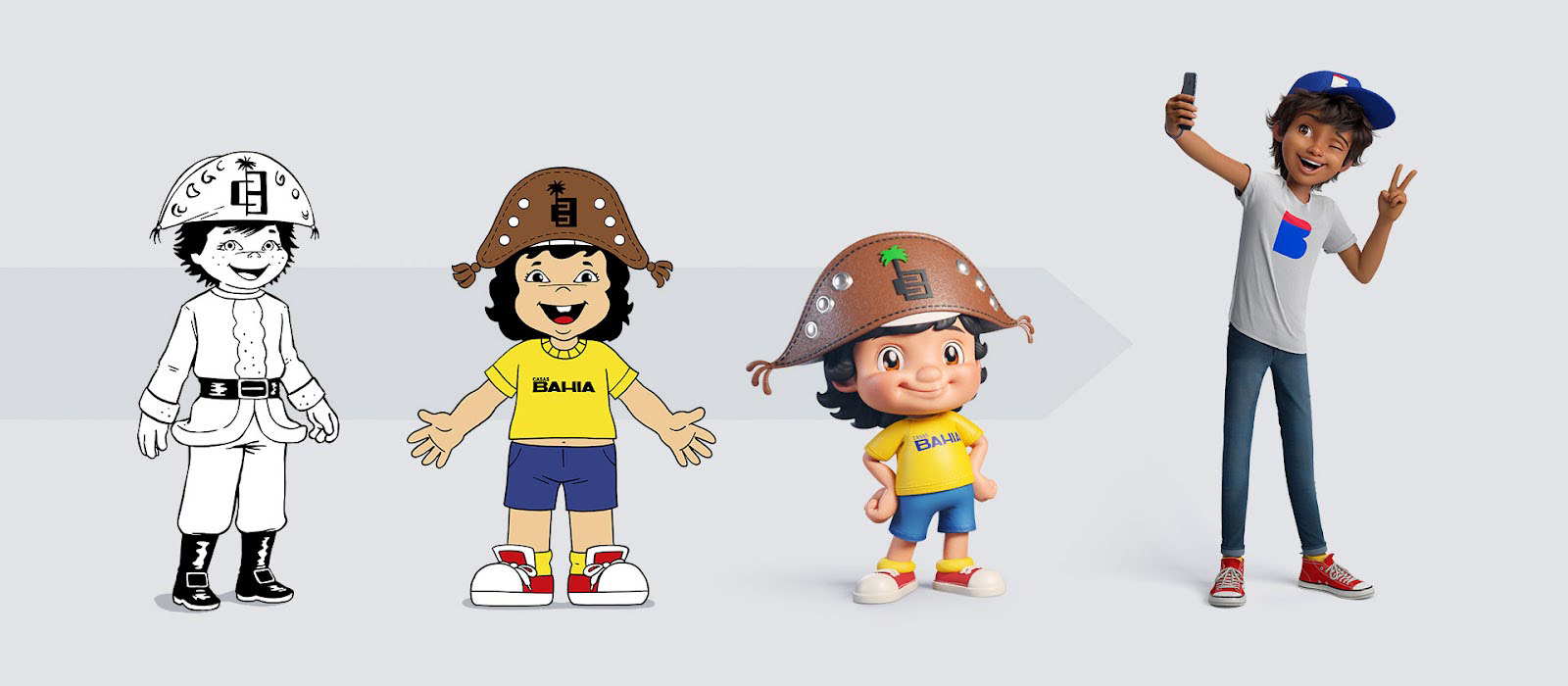
Casas Bahia, one of Brazil’s largest retail chains, had a longtime mascot known as “Bahianinho”—a cheerful cartoon boy who symbolized affordability and friendliness.
In 2020, the brand decided to reintroduce him to a new generation. The result? CB—a fully reimagined, digitized version of the original mascot, transformed into a Gen Z-savvy virtual influencer.
Now CB lives on Instagram, speaks fluent meme, wears modern streetwear, and talks like a real person. He doesn’t just advertise sales—he reacts to music drops, supports social causes, and even roasts followers in the comments. CB went from being a logo with a smile to a full-blown personality with reach, rhythm, and relevance.
And the result? Over 10 million followers across platforms—and a younger, more engaged audience that now sees Casas Bahia as digitally fluent and culturally in-touch.
Duolingo Owl – From App Icon to Chaotic Social Media Legend
At first, Duo—the green owl from the Duolingo language app—was just a helpful little reminder to practice your Spanish or French. But in recent years, Duo became something far more powerful: a full-blown TikTok legend.
The brand leaned into humor and internet culture, giving Duo a chaotic, sarcastic, sometimes unhinged personality. The owl began “threatening” users for missing lessons, reacting to pop culture drama, and playfully bullying celebrities (all in good fun).
Now Duo isn’t just a mascot. He’s a creator. One that fans actively engage with, tag in comments, and create fan art around.
This transformation didn’t require a full CGI overhaul—but it did require a bold creative voice, fast content production, and a clear understanding of internet-native humor. In other words, Duo became a virtual influencer without ever leaving the suit.
These two examples prove a powerful truth:
A mascot can do more than just represent your brand—it can lead it, speak for it, and grow with it across digital culture.
The Future of Brand Characters
Brand characters are no longer static assets—they’re evolving into a new hybrid: the AI-driven virtual mascot. What started as a cute cartoon on a cereal box can now, with this evolution, become a CGI-driven influencer, a metaverse host, or even a 24/7 AI-powered brand rep.
The future isn’t about choosing between a mascot or a virtual influencer. It’s about building characters that can adapt, expand, and perform across formats, devices, and generations.
We’re heading toward a world where:
- Your brand mascot speaks 6 languages (thanks to AI).
- Your digital influencer also stars in ad campaigns, tutorials, and metaverse meetups.
- Your character’s story grows with your audience—evolving from a symbol into a true content asset.
In short: the lines are blurring, the tech is accelerating, and the opportunity is wide open.
If your brand already has a character—now’s the time to give it a new role.
If you don’t—what’s stopping you from creating one built for the platforms of tomorrow?
Because in the next era of branding, characters won’t just support your story. They’ll be the story.
Conclusion
Virtual influencers and brand mascots may have started on different paths—but today, they’re part of the same evolution. Whether you’re working with a long-standing character or just beginning to build your brand’s visual identity, one thing is clear: characters aren’t just marketing tools anymore. They’re storytellers. Relationship-builders. Digital assets with long-term value.
Now that you understand the powerful connection between these concepts, the next step is to put them into action. To learn how to build a powerful strategy around these evolved characters, from content creation to campaign execution, read the complete guide to virtual influencer marketing.
You don’t need to choose between tradition and innovation. You can have both.
At Dream Farm Agency, we specialize in creating and evolving brand characters—from nostalgic mascots to trend-savvy virtual influencers ready for today’s platforms. Whether you want to bring your mascot to life, launch a new virtual persona, or craft a hybrid that does it all, we’ve got the creative and technical power to make it happen.
Explore our Works page to see what we’ve built for brands like yours.
Ready to start your own virtual influencer or mascot project? Contact us today—and let’s build the face of your future.

HosseinDigital Marketing Expert
